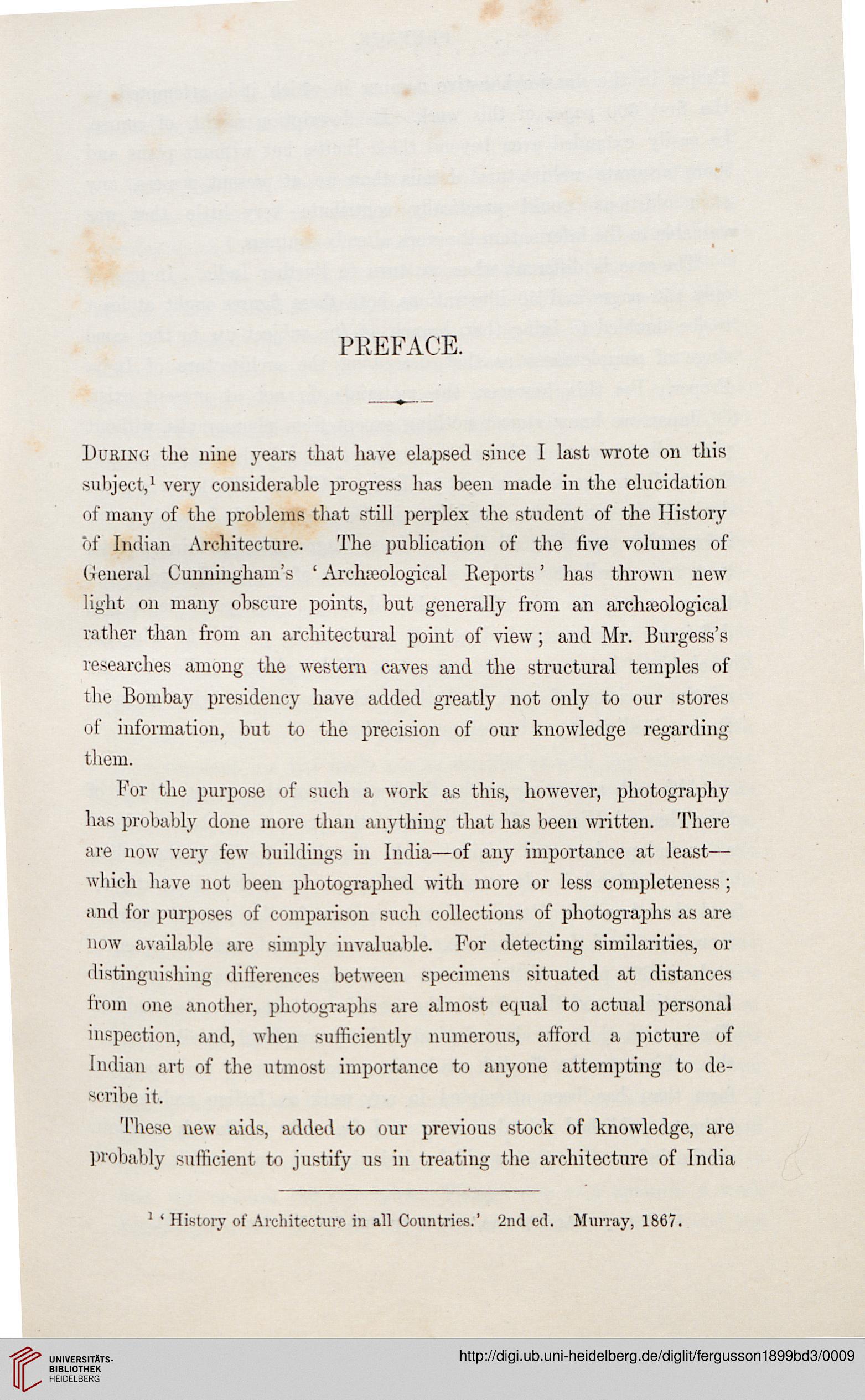PREFACE.
Durino the nine years that have elapsed since I last wrote on this
subject,1 very considerable progress has been made in the elucidation
of many of the problems that still perplex tbe student of the History
of Indian Architecture. The publication of the five volumes of
General Cunningham's ' Archaeological Reports' has thrown new
light on many obscure points, but generally from an archaeological
rather than from an architectural point of view; and Mr. Burgess's
researches among the western caves and the structural temples of
the Bombay presidency have added greatly not only to our stores
of information, but to the precision of our knowledge regarding
them.
For the purpose of such a work as this, however, photography
has probably done more than anything that has been written. There
are now very few buildings in India—of any importance at least—
which have not been photographed with more or less completeness;
and for purposes of comparison such collections of photographs as are
HOW available are simply invaluable. For detecting similarities, or
distinguishing differences between specimens situated at distances
from one another, photographs are almost equal to actual personal
inspection, and, when sufficiently numerous, afford a picture of
Indian art of the utmost importance to anyone attempting to de-
scribe it.
These new aids, added to our previous stock of knowledge, are
probably sufficient to justify us in treating the architecture of India
1 ' History of Architecture in all Countries.' 2nd e<l. Murray, 1867.
Durino the nine years that have elapsed since I last wrote on this
subject,1 very considerable progress has been made in the elucidation
of many of the problems that still perplex tbe student of the History
of Indian Architecture. The publication of the five volumes of
General Cunningham's ' Archaeological Reports' has thrown new
light on many obscure points, but generally from an archaeological
rather than from an architectural point of view; and Mr. Burgess's
researches among the western caves and the structural temples of
the Bombay presidency have added greatly not only to our stores
of information, but to the precision of our knowledge regarding
them.
For the purpose of such a work as this, however, photography
has probably done more than anything that has been written. There
are now very few buildings in India—of any importance at least—
which have not been photographed with more or less completeness;
and for purposes of comparison such collections of photographs as are
HOW available are simply invaluable. For detecting similarities, or
distinguishing differences between specimens situated at distances
from one another, photographs are almost equal to actual personal
inspection, and, when sufficiently numerous, afford a picture of
Indian art of the utmost importance to anyone attempting to de-
scribe it.
These new aids, added to our previous stock of knowledge, are
probably sufficient to justify us in treating the architecture of India
1 ' History of Architecture in all Countries.' 2nd e<l. Murray, 1867.




